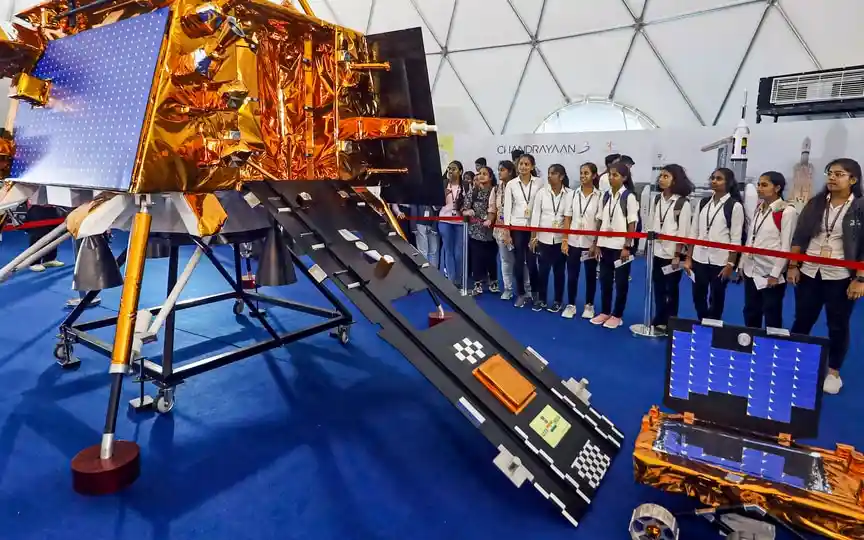ISRO aims to land an Indian astronaut on the Moon by 2040 following the success of the Chandrayaan-3 mission.
ISRO is preparing to continue its achievements with the Chandrayaan-3 mission, which successfully landed the Vikram Lander and Pragyan Rover on the moon. The research conducted during this mission has provided valuable information about the composition of the Moon and has paved the way for future lunar landings. The mission lasted for 14 days and resulted in the discovery of various elements in the lunar soil, including aluminium, calcium, iron, chromium, titanium, sulphur, manganese, silicon, and oxygen. This significant finding was made at the South Pole of the Moon, now referred to as the Shiv Shakti point.
However, ISRO is not only thinking of sending a new mission to the Moon in the form of the Chandrayaan-4 mission, but has added one more goal – to send an Indian astronaut to the Moon by a certain date.
PTI reports that after the historic success of its Chandrayaan-3 mission, ISRO is going full throttle with its plans to send Indian astronauts to the Moon for the first time by 2040. This was revealed by ISRO Chairman S Somanath.
Bengaluru-based ISRO is currently working on the manned Gaganyaan mission to Earth, which aims to send astronauts into low Earth orbit and bring them back safely to Earth.
Four pilots from the Indian Air Force who were selected for the mission are undergoing training at the Astronaut Training Facility in Bengaluru, a top scientist said.
Quoting Manorama Yearbook 2024, PTI said that the Secretary of the Ministry of Space has said, “Going forward, ISRO aims to take the next step in space exploration through the Gaganyaan program, planning to launch a crew of 2-3 Indian astronauts into Low Earth Orbit (LEO) for a maximum of three days before being returned safely to a predetermined location in Indian waters.”
The first manned mission involves the development of critical technologies, including a human-class (capable of carrying people safely) launch vehicle (HLVM3), an orbital module consisting of a crew module (CM) and a service module (SM), and life support systems.
Two identical unmanned missions (G1 & G2) in addition to the Integrated Air Drop Test, Pad Abort Test and Test Vehicle flights will precede the manned mission.
The CM is a habitable state with an Earth-like environment in space for the crew and is designed for safe return. A Malayala Manorama release stated that the security measures also include a Crew Escape System (CES) for emergency situations.
The first development flight of the test vehicle (TV-D1) began on 21 October 2023 and successfully demonstrated a Crew Escape System abort of flight, followed by separation of the crew module and its safe recovery from the Bay of Bengal. Indian Navy.
“The success of this test flight was crucial for subsequent unmanned missions and the final human space mission expected to launch in 2025,” said Somanath, who is also the chairman of the Space Commission.
On the success of the Chandrayaan-3 mission, he called it a “historic achievement”, leading the Prime Minister to declare August 23 (landing near the moon’s south pole) as “National Space Day in India”.
Other Upcoming ISRO Missions:
1. Small Satellite Launch Vehicle (SSLV)
2. Reusable Launch Vehicle (RLV) program
3. X-ray star mission XPOSAT (X-ray Polarimeter Satellite)
4. Space Docking Experiment and LOX methane engine.
According to Somanath, Prime Minister Narendra Modi has set ambitious targets like commissioning Bharatiya Antariksha Station (Indian Space Station) by 2035 and starting interplanetary research with Venus Orbiter Mission and Mars Lander to further strengthen India’s presence in space. global space phase.




